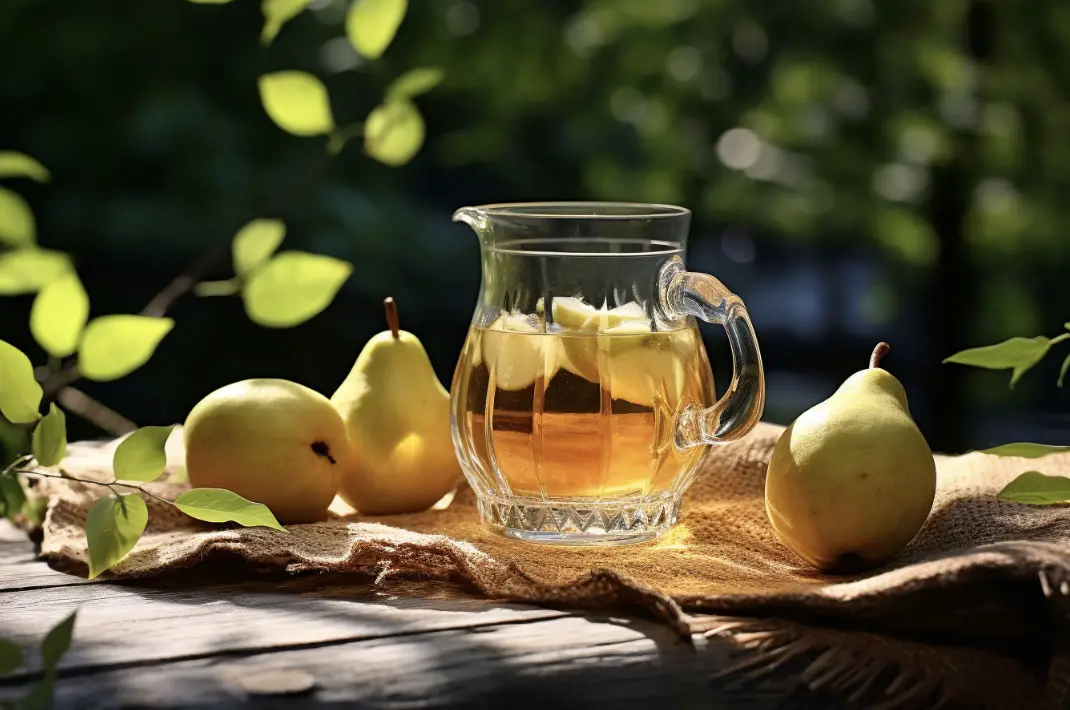How to remove tannins from wine? Tannins are naturally occurring compounds that can sometimes cause a bitter or astringent taste in wine.
While some tannins are desirable for their ability to add structure and complexity to wine, excessive tannins may make the wine less enjoyable to drink.
Fortunately, there are several methods you can use to reduce the tannin content of your wine, resulting in a smoother and more balanced flavor profile.
In this blog post, we will explore various techniques for removing tannins from wine, as well as some tips for preventing excessive tannin extraction during the winemaking process.
Understanding Tannins
What are Tannins?
Tannins are a group of polyphenolic compounds found in various plants, including grapes. They serve a number of functions in plants, such as protection from herbivores and pathogens, and providing structural support.

In wine, tannins contribute to the taste, mouthfeel, and color stability. They are primarily found in red wines, as they are extracted from the grape skins, seeds, and stems during the fermentation process.
Why Remove Tannins?
While tannins can provide structure and complexity to wine, excessive amounts can result in a wine that is too bitter or astringent.
This can make the wine less enjoyable to drink and may even cause the wine to appear cloudy or hazy.
Removing some tannins can help to create a smoother, more balanced wine with a more pleasant taste and mouthfeel.
Techniques for Removing Tannins
There are some ways of removing tannins that will take additional ingredients or manipulation of temperature or extended storage of the wine.
My go-to is cold crashing, which is least invasive and quite effective in my experience. Fining agents are more efficient, but do change the taste.
Cold Stabilization (cold crashing)
Cold stabilization is a technique that involves chilling the wine to encourage the precipitation of tannins and other unwanted compounds. This can be done by placing the wine in a cold room or using a refrigeration unit specifically designed for winemaking.

After a period of time (usually between one and three weeks), the tannins and other compounds will settle to the bottom of the container, allowing you to rack the wine off the sediment.
Fining Agents
Fining agents are substances that are added to wine to help remove tannins and other unwanted compounds.
They work by binding to the tannins and forming larger particles that can be easily removed from the wine. Some common fining agents include:
- Bentonite: A type of clay that is particularly effective at removing proteins and other haze-forming compounds.
- Egg whites: A traditional fining agent that can help to reduce astringency and improve clarity.
- Gelatin: A protein derived from animal collagen that is effective at removing tannins and improving mouthfeel.
- Isinglass: A substance derived from fish bladders that is particularly effective at removing tannins and improving clarity in white wines.
In the realm of white wine production, isinglass emerges as a specialized fining agent derived from fish bladders. Its unique properties make it particularly adept at addressing tannins and enhancing clarity, which is of paramount importance in white wines where visual appeal is a key attribute. The controlled application of isinglass can lead to wines that are not only visually striking but also exhibit a heightened level of refinement in taste and aroma.
Incorporating these fining agents into the winemaking process requires careful consideration and expertise. Winemakers must weigh the benefits of improved clarity, reduced astringency, and enhanced mouthfeel against the potential risks of altering the wine’s character. Striking the right balance between intervention and preservation is an ongoing challenge that demands a deep understanding of both the science and art of winemaking.
In summary, fining agents serve as invaluable tools in the winemaker’s arsenal, allowing for the precise manipulation of wine characteristics to achieve the desired sensory profile. As the industry continues to evolve, so too does the exploration of innovative fining techniques, advancing the art of crafting exceptional wines that captivate the senses.
Extended Aging
Extended aging can help to naturally reduce the tannin content of a wine, as tannins will gradually bind to other compounds and precipitate out of the wine over time.
This can be done in a variety of ways, such as aging the wine in oak barrels, which can also contribute more tannins depending on the barrel type, so simply allowing the wine to age in bottles for an extended period of time is often the best option here.

Preventing Excessive Tannin Extraction
Selecting the Right Grapes
The first step in preventing excessive tannin extraction is selecting the right grapes for your wine.
Different grape varieties contain different levels of tannins, so choosing a variety with naturally lower tannin levels can help to minimize the potential for astringency in the finished wine.

Additionally, ensuring that your grapes are fully ripe before harvesting can also help to reduce the potential for excessive tannin extraction, as unripe grapes tend to be higher in tannins.
Gentle Pressing
The way you handle your grapes during the winemaking process can also have an impact on the amount of tannins that are extracted. Using a gentle pressing technique can help to minimize the amount of tannins that are released from the grape skins, seeds, and stems during the fermentation process.
Temperature Control
Controlling the temperature during fermentation can also help to minimize tannin extraction. Lower fermentation temperatures can help to reduce the solubility of tannins in the wine, resulting in less tannin extraction overall.
Conclusion
In conclusion, there are several techniques you can use to remove tannins from wine, including cold stabilization, using fining agents, and extended aging.
Additionally, taking steps to prevent excessive tannin extraction during the winemaking process, such as selecting the right grapes, using gentle pressing techniques, and controlling fermentation temperatures, can help to create a more balanced and enjoyable wine.
Here are 10 key facts about tannins in wine:
1. Tannins are naturally occurring compounds found in grapes and other plants.
2. They contribute to the taste, mouthfeel, and color stability of wine.
3. Excessive tannins can result in a wine that is too bitter or astringent.
4. Cold stabilization can help to remove tannins by encouraging precipitation.
5. Fining agents such as bentonite, egg whites, gelatin, and isinglass can be used to remove tannins from wine.
6. Extended aging can help to naturally reduce tannin content over time.
7. Choosing grapes with lower tannin levels can help to prevent excessive tannin extraction.
8. Using gentle pressing techniques can minimize tannin extraction during fermentation.
9. Controlling fermentation temperatures can also help to reduce tannin extraction.
10. Balancing tannin levels can result in a smoother, more enjoyable wine.
FAQs
How do you neutralize tannins in wine?
To neutralize tannins in wine, you can employ a few techniques. One method is to aerate the wine by decanting it into a wide-bottomed container or using a wine aerator. This allows the tannins to interact with oxygen, softening their impact. Another approach is to blend the wine with another low-tannin wine, which can help balance out the tannin levels. Additionally, aging the wine in the bottle or cellar can also help mellow the tannins over time.
What can you do to reduce tannins?
To reduce tannins in beverages like tea or wine, you can try a few methods. One option is to brew tea for a shorter duration or use cooler water, as tannins are extracted more when steeped for longer or at higher temperatures. Adding a splash of milk or cream to your tea can also help reduce tannin levels. In the case of wine, opting for younger wines or those with lower tannin content can be a solution. Additionally, aerating wine by decanting or using a wine aerator can help soften tannins.
What do you add to wine if you add too much tannin?
If you add too much tannin to wine, you can try to balance it by adding substances that can help reduce its impact. Some common methods include blending the wine with a less tannic wine to dilute the tannins, adding substances like egg whites or gelatin which can bind with tannins and remove them, or using fining agents like activated charcoal or isinglass to help reduce the tannin levels.
How do you counteract tannins in wine?
To counteract tannins in wine, there are a few methods you can try. One approach is to aerate the wine by decanting it into a wide-bottomed container, allowing it to come into contact with air and soften the tannins. Another option is to swirl the wine in your glass, which also introduces some air and can help mellow the tannins. Additionally, you can pair tannic wines with foods that have a higher fat content, as this can help balance out the tannins.
How do you remove tannins from alcohol?
To remove tannins from alcohol, you can try a few methods. One common approach is to use activated carbon or charcoal filters. These filters help to absorb and remove tannins, resulting in a smoother taste. Another method is to use fining agents like gelatin or bentonite, which can bind with tannins and precipitate them out of the alcohol. Additionally, aging the alcohol in oak barrels can help to mellow and reduce tannins over time.
Can tannins be filtered out of wine?
Yes, tannins can be partially filtered out of wine. Filtration methods such as fining or using filtration mediums like activated carbon can help reduce tannin levels. However, complete removal of tannins is challenging as they are naturally occurring compounds that contribute to the structure and flavor of the wine.





